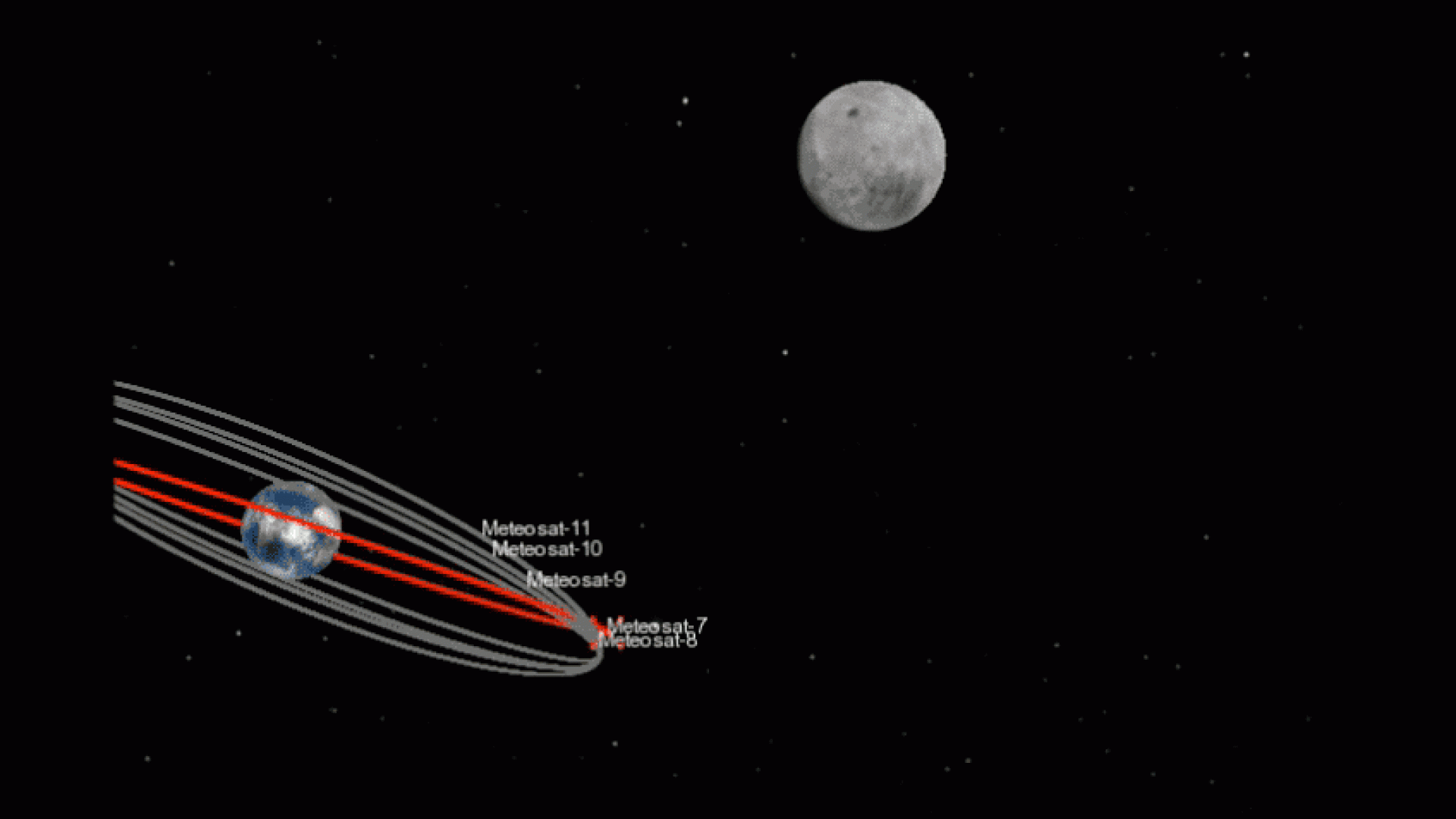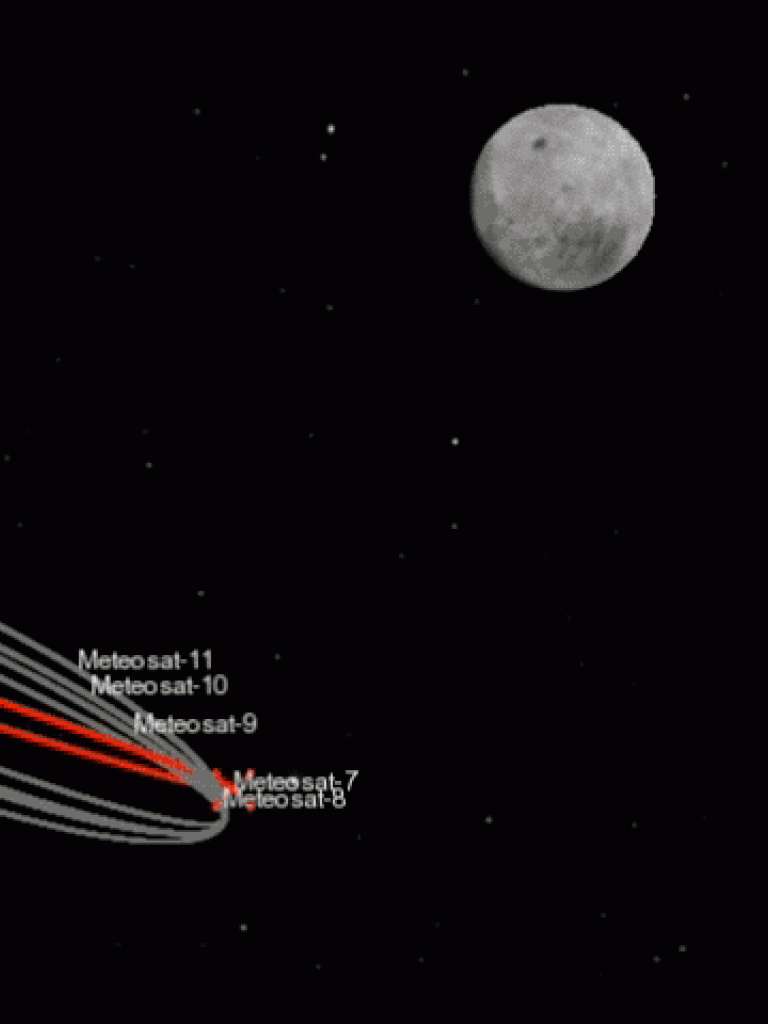The best of both worlds
How innovations in science and technology have driven Meteosat programmes to new heights.

Meteosat-7 will soon be retired to a graveyard orbit after almost 20 years of service and several celestial bodies have taken the opportunity to make the send-off memorable.


19 May 2022
04 February 2017
What makes this eclipse more interesting (apart from it being Meteosat-7’s last) is that, less than half-an-hour later, the satellite will move into the Earth’s shadow for a short while. You can watch below a short animation illustrating what will occur.

“Meteosat-7 is currently in its eclipse season, which means Earth eclipses, when the satellite moves into the Earth’s shadow, will occur every night,” Flight Dynamics Engineer Milan Klinc said.
“However, this is the last time we will have the additional crossing of the shadow of the Moon.”
"The Meteosats carry batteries to provide electrical power to the heaters needed to keep the spacecraft warm when there is no energy from the Sun"
These two events happening so close together will affect the satellite’s thermal control and battery operations, Klinc said.
Spacecraft Operations Team Leader Lee Matheson said that, because the Earth’s shadow blocks the Sun’s rays from reaching the satellite’s solar arrays during an Earth eclipse, the spacecraft can become very cold.
“For this reason, the Meteosats carry batteries to provide electrical power to the heaters needed to keep the spacecraft warm when there is no energy from the Sun,” Matheson said. “The batteries also provide electrical power for the computers, communications equipment, and the imaging instruments when solar energy is not available.
“The batteries of the Meteosat spacecraft receive very special care. For example, they have to be reconditioned before each eclipse season.
“This work is particularly demanding for the older Meteosat-7 spacecraft, as it has significantly less battery power than the newer Meteosat Second Generation spacecraft. For this reason, selected equipment in the Meteosat-7 satellite is switched off before the eclipse, and then turned back on afterwards, to save power.”
Star gazers will have noticed that Venus was appearing very brightly in the night sky earlier in February. This planet also appeared inside the field of view of the imager instruments on board Meteosat-7, as the image shows.


Meteosat-7 was launched on 2 September 1997 and was the last of the first generation of Meteosat satellites.
The first generation Meteosat satellites had an expected lifetime of five years. The fact that Meteosat-7 has continued to provide data and imagery which helps saves lives and property and prevent economic loss after almost 20 years is testament to robust design and prudent flight operations.
After its launch and commissioning phase, Meteosat-7 was stationed at 0° longitude, until moving to 57°E in 2006 to replace Meteosat-5 in providing the Indian Ocean Data Coverage (IODC) service. By then, MSG satellites had taken over the 0° service.
Meteosat-7 will be decommissioned and switched off in April this year, putting an end to a very successful mission.
Being the last of the first generation series, this will also mark the end of the 40-year-long history of what was the first European meteorological satellite system in geosynchronous orbit.
Meteosat-8, EUMETSAT’s first MSG satellite, was last year moved to 41.5°E to take over from Meteosat-7, providing IODC coverage in a multi-partner arrangement with Indian, Chinese and Japanese geostationary satellites.